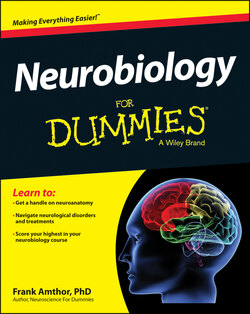Читать книгу Neurobiology For Dummies - Frank Amthor - Страница 26
Movement basics: Muscles and motor systems
ОглавлениеChapter 5 deals with the main purpose of the nervous system, the production of movement. Generally, animals move and have nervous systems to control movement, whereas plants don’t. Voluntary movement, controlled by the central nervous system, involves the contraction of striated muscle triggered by the receipt of acetylcholine, a neurotransmitter released by motor neurons.
Individual muscles are made of thousands of muscle cells innervated by several different types of motor neurons. The contraction of the muscle is produced by the coordinated activity of all these motor neurons that fire in a specified sequence and rate depending on the type of movement programmed, its speed, duration, and variation in load the limb experiences as it moves. Differences or errors between the central commands and actual limb position and acceleration are reported by sensory neurons in the muscles, tendons, and joints that relay this information to the spinal cord in a feedback loop that adjusts the motor neuron output to match the upper-level command goal.
The entire frontal lobe of the brain exists primarily to program and organize goal-directed movement. An abstract goal, such as hitting a tennis ball back into your opponent’s court, is translated into a sequence of leg, torso, and arm movements to accomplish this goal. These sequences are programmed into the motor cortex following practice. This practice involves learning sequence timing with the help of the cerebellum. The cerebellum is involved in learning and setting up predictive, feed-forward control for appropriate timing of sequences that transition more rapidly than feedback spinal sensory control could correct.
